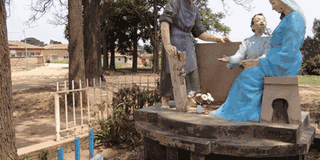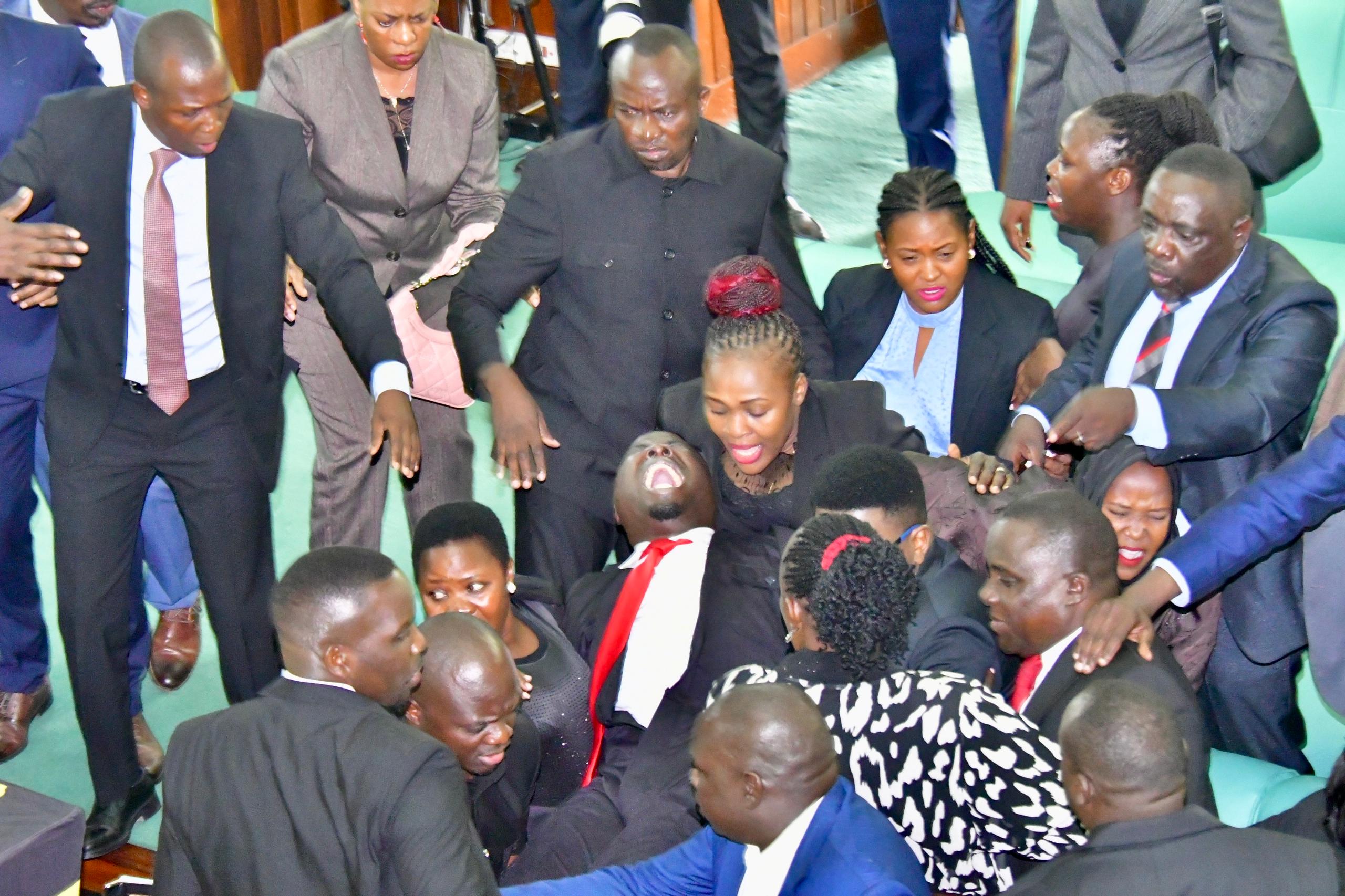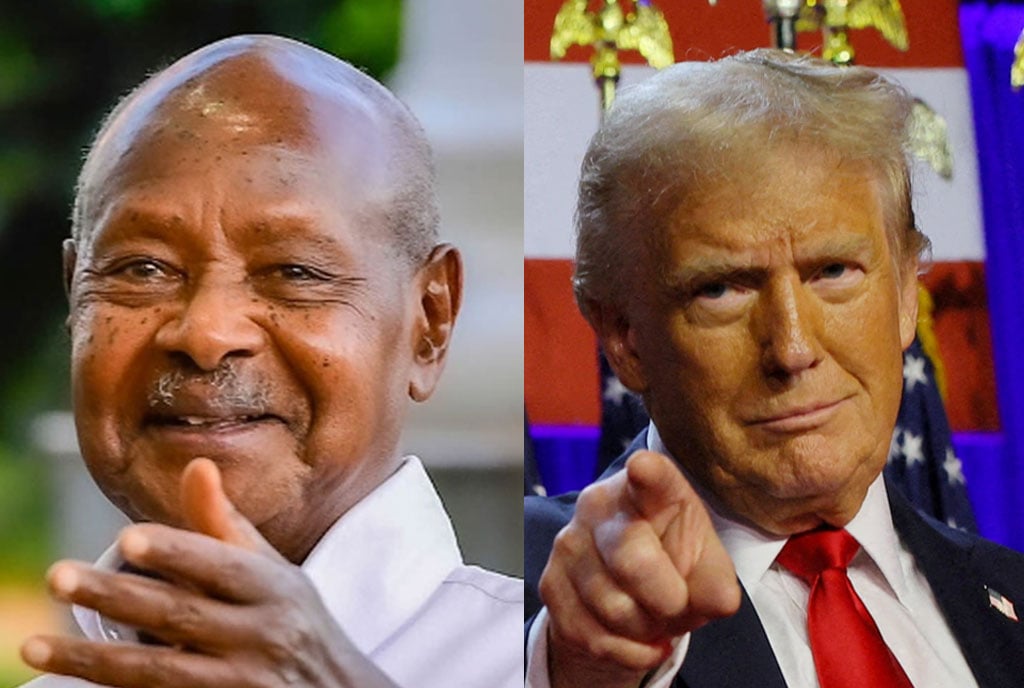Prime
How Catholicism entered Rwanda

Pedestrians walk past the sign post of Kabgayi Cathedral in Rwanda. Above is the Catholic Statuary at Kabgayi Cathedral.
What you need to know:
Religious matters. While celebrating the Martyrs Day recently, several faithful brandished flags from regional countries, including Rwanda. But what is the history of Catholics in Rwanda?
Kampala.
On June 3, thousands of pilgrims from Uganda, Africa and beyond, congregated at the Uganda Martyrs Shrine, Namugongo outside Kampala city to celebrate the Martyrs Day.
Between 1885 and 1887, more than 40 Catholics and Protestants were brutally murdered on orders of King Mwanga of Buganda for they disobeyed him and followed the light of God.
The calibre of 22 Catholic faithful, who were murdered for their faith and were later canonised on October 18, 1964 by Pope Paul VI, in Rome Italy, inspired many other Ugandans to be firm and spread the gospel beyond Buganda. And when time came to spread the Catholic faith beyond Buganda, Rwanda in the south was first choice.
Yowana Kitagaana, who was from Ssesse Islands in Lake Victoria, was, however, more prominent in the spread of the Catholic faith in southern Uganda and Rwanda while in early 1890s, Apollo Kivebulaya engineered the evangelisation in the Congo.
Records
However, the spread of the Catholicism in Rwanda from Uganda is more recorded than in Congo.
And that was the advent of modern diplomacy between Rwanda and Uganda through religion as people traversed between the two nations in search of better opportunities for life.
Worth to note is that although there was communication earlier between the two peoples, it was inconsequential until the religious people came. Kabgayi in Rwanda is what Nabulagala is to Uganda as regards the Catholic faith in the two countries.
In February 1879, Father Simeon Lourdel and Brother Amans met King Mukabya, aka Mutesa I of Buganda, who later gave them land at Nabulagala where they constructed the first Catholic Church in Uganda.
A lot of that history was recorded in the book: The beginning of the White Father mission in Southern Uganda & the organisation of the catechumenate 1879-1914, which recorded the advent of the Catholic church in Uganda and Rwanda.
The book also contains some of Father Lourdel and Bishop Joseph Hirth’s memoirs as well as from the earliest priests to come to Uganda.
Thus, Rwandans who trek to Namugongo follow the path Ugandans made in 1900 while spreading the faith to their country.
Upon landing at Entebbe airport on August 1, 1969, Pope Paul VI said: “Thanks be to God for the marvels of his grace poured out abundantly upon Uganda and for the generous response of Africa to the gospel message. To these we bear witness by our pilgrimage to the sanctuary of the martyrs of Uganda whose blood bathed the cross of Christ planted by the first missionaries, and brought honour, renown and the merit of love’s highest testimony to all of Africa”. The Papal visit was the first in Africa.
Cause
The murder of the martyrs thus only strengthened Ugandans – and when the call was made to spread the Catholic faith, 12 Ugandans headed by Abdon Sabakaaki went with Bishop Joseph Hirth to Rwanda and settled at Save, Kabgayi on the land given to them by the king.
The Ugandans were, however, more involved in catechism. Some of them stayed and died at Save and were buried there.
In late 1890s, Bishop Lavigerie Livinhac, who was with the Father Lourdel and Brother Amans team when they first arrived in Uganda, was recalled to Roma, Italy. He was succeeded by Bishop Guillermain as the head of the Nyanza Vicariate which included Uganda, Kenya, Tanzania, Rwanda-Urundi and Congo but died shortly and was replaced by Bishop Streicher.
By a decree of July 13, 1894, the department of the Mission of the Vatican, Propaganda Fide, divided the Victoria-Nyanza vicariate into three: the north-eastern part was called the upper Nile vicariate which was given to the Mill Hill Fathers with Monsignor Henry Hanlon as the Vicar Apostolic. The southern part was called South Nyanza which was put under Bishop Joseph Hirth while the new Vicar Apostolic Monsignor Antonin Guillermain was appointed the head the North-west Nyanza.
The southern part included Rwanda-Urundi and Tanzania which was given to Bishop Joseph Hirth, while Uganda was under Bishop Streicher.
In January 1900, Bishop Hirth with a group of other priests, including one Father Classe and the 12 Ugandans headed by Abdon Sabakaaki Namukande left for Rwanda.
On February 8, 1900, they settled at Save,Kabgayi where they built the first church ever in Rwanda. The land was given to them by the king of Rwanda.
From Kabgayi, religion started to spread across Rwanda and Burundi as other missions were established. As more Rwandans converted to Catholicism, Bishop Hirth saw the need to establish a seminary.
First seminary in Rwanda
On December 25, 1912, the first seminary in Rwanda was opened at Kansa with 17 seminarians from across Rwanda as well as Burundi. However, on September 30, the seminary was transferred to Kabgayi. The fruits of the seminary were harvested five years later.
In Uganda, the first seminary was established in 1890 at Rubaga Hill. But during the infamous Buganda religious wars, especially between the Catholics and Protestants, the seminary and church were torched on January 24, 1892 by the Protestant fighters commanded by the British Captain Williams Lugard, who before coming to Uganda had fought in Afghanistan during the 1880s Anglo-Afghanistan war in which tens of thousands of Muslims were killed and many mosques destroyed.
First Rwandan priests
On October 1917, the first Rwandan Catholic priests were ordained. Bishop Hirth ordained Reverend Father Balthazar Gafuku and Donat Reberaho at Kabgayi church amidst jubilations. Four years earlier, the first two Ugandan priests had been ordained in Masaka.
In 1919, when Bishop Hirth ordained Joseph Bugondo, he became the third Rwandan priest.
On January 14, 1952, Father Aloysio Bigirumwami was ordained and consecrated the bishop; and became the first Rwandan to be consecrated bishop. He was a son of Joseph Rukamba and Madalana Nyinabushyondoro.
On March 1909, the first White Sisters arrived at Save. They were led by Ignatius who encouraged Rwandan girls to join the work of spreading the gospel. And on December 8, 1914, two Rwandan nuns were the first in the country to make vows.
While Kabgayi was the cradle of Christianity in Rwanda and Burundi, the hill was, during the genocide, riddled with sadness. Because of the muddle that characterised politics in Rwanda and especially when genocide started, some clergies were murdered at the church by the Rwanda Patriotic Front rebels.
On June 8, 1994, the RPF issued a statement regretting the killing of the Roman Catholic archbishop of Kigali, two bishops and nine other priests at Kabgayi by four soldiers of the RPF who suspected the clergies of having been involved in the death of their parents. The statement also condemned the inhumane act by its soldiers.
President Museveni in his speech during the Heroes’ Day held at Kisowera Primary School in Mukono in the 1990s condemned the inhumane act. And for the first time since October 1990 when RPF attacked Rwanda from Uganda, perhaps inadvertently, revealed his contacts with the RPF fighters.
Before, President Museveni had denied any contact with the RPF fighters. He said: “I have told RPF quietly about it and I am now telling it publicly that NRM will not associate with killers”.
The killing of the Catholic Archbishop of Kigali, Vicent Nseng’eyunva, Bishop Thaddeus Nseng’eyunva, of Kabgayi Diocese and Bishop Joseph Ruzindana of Byumba Diocese and nine other priests at Kabgayi by the RPF soldiers who had been sent to the church to guard them, was also recorded by the overall commander of the United Nations Assistance Mission for Rwanda (UNAMIR) , General Remeo Dallaire in his memoirs: “Shake hands with the devil”.
On page 414, General Dallaire wrote: “At the ceasefire meeting held on June 9, the RPF acknowledged a total breakdown of military control at Kabgayi and that it was a group of its soldiers who had viciously slaughtered the clerics, all of whom were Hutu”.
In an effort to foster unity and reconciliation, after the genocide, the government in Rwanda also involved religious leaders, among others, to expedite the healing of the country.




